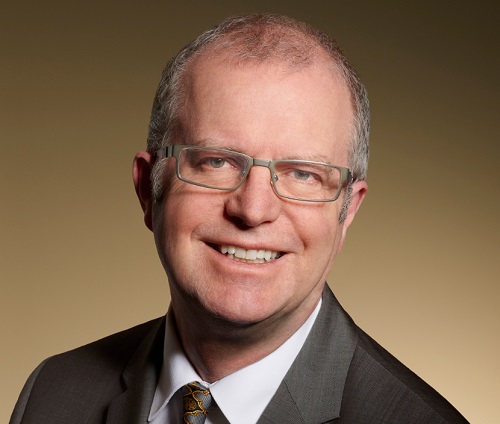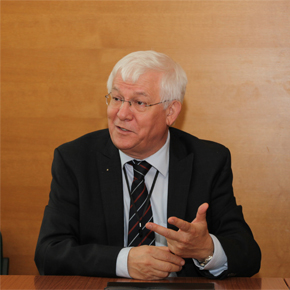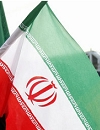 |
||
|
Questions for Jerry Hopwood AtomInfo.Ru, PUBLISHED 12.12.2013
CONTINUED BELOW Jerry Hopwood, (c) Candu Energy  Mr. Hopwood, could you introduce please, the Candu Energy to our readers? We knew a lot about the AECL, a Crown Corporation. What has changed and what is remained unchanged now, since the Candu Energy was founded? Candu Energy Inc. is a leading full-service nuclear technology company providing nuclear power reactors and nuclear products and services to customers worldwide. Candu Energy acquired the commercial reactor division of AECL in October 2011; Candu Energy is a wholly-owned subsidiary of SNC-Lavalin Inc, Canada's largest Engineering, Procurement, and Construction (EPC) company, with offices in over 40 countries. Candu Energy is responsible for marketing Canada's nuclear power technology (developed by AECL). Our 1,400 highly skilled employees design and deliver state-of-the-art CANDUЃ reactors, carry out life extension projects, offer operations, maintenance and plant life management services for existing nuclear power stations. CANDU reactors are an important component of clean air energy programs on four continents with over 22,000 megawatts of installed capacity. Candu develops products to deliver safe, reliable, affordable and CO2-free energy with a view to the future, while meeting the global nuclear industry's highest safety and regulatory standards. Canada is one of a few countries, which is actively developing the heavy water reactor technology. What are, in your opinion, the main advantages of such reactors like CANDU? CANDU reactors offer a combination of proven and superior state-of-the-art technology. The CANDU reactor was designed specifically for electricity production, unlike other major reactor types that evolved from other uses. This focused development is one of the reasons that CANDU has such high fuel efficiency. CANDU reactors are heavy-water moderated and have heavy-water cooled horizontal pressure tubes. Heavy water is a natural form of water used as a moderator to slow down the fission chain reaction neutrons in the reactor. It is one of the most efficient moderators and enables the CANDU design to use natural uranium as fuel, which is unique to CANDU reactors. The use of natural uranium increases a country's energy independence as fuel can be manufactured locally and reprocessing and associated issues can be avoided. CANDU reactors also feature on-line refuelling, allowing them to operate continuously for much longer durations between outages. CANDU reactors are uniquely flexible and can be modified to use alternative fuels, including mixed oxide (MOX), natural uranium equivalent (NUE) and thorium. What reactor designs are offered now by the Candu Energy company? The Enhanced CANDU 6 (EC6) Generation III reactor design builds on our proven success. It is the only reactor that offers natural uranium fuelling, superior safety performance and economics, very high localization, and is suitable for small and medium electric grids. In June 2013, the EC6 successfully completed the final stage of the Canadian Nuclear Safety Commission (CNSC) pre-project design review and is now ready for site-specific application. Candu also offers an Advanced Fuel CANDU Reactor (AFCR). A fuel-flexible adaptation of the EC6, it incorporates the same design enhancements related to safety, fuel flexibility, operational feedback and lessons learned from events at Fukushima. Of interest in countries like China, with limited access to natural uranium, the AFCR advances the continuous evolution of the CANDU design, while retaining the provenness of the reference plant. The CANDU 6 is our 700 MWe class nuclear power reactor. The first CANDU 6 plants went into service in the early 1980s as leading-edge technology, and the design has continuously evolved since to maintain superior technology and performance. There are 11 operable CANDU 6 units in Canada, Argentina, Romania and China. We remember such proposals like the DUPIC. Is your company still interested in this field? Could you explain please how the CANDU technology can help to address the problem of LWRs spent fuel? CANDU alternate fuels have been studied and developed for many years at AECL, and has included the use of the DUPIC concept for dry reprocessing. The most immediate application, already underway, is the use of recycled uranium in China. Our AFCR can efficiently use recycled uranium (RU) from the spent fuel of light water reactors (LWRs). This allows countries without ready access to natural uranium to continue the sustainable and large scale development of nuclear power, while avoiding the complexity and associated cost of recycling RU from LWRs. Using RU in a CANDU reactor improves uranium resource utilization and also results in fuel cost savings for the utility. Each RU-burning AFCR can use the spent fuel from3 LWRs to create more power from existing resources. The news is regularly appearing in the media about Candu Energy interest to build the heavy water reactor abroad - for example, in the UK, China, Ukraine and others. Can you briefly tell us please about the prospects of the international cooperation for your company? Candu Energy is co-operating with many international governments discussing both new build and life extension opportunities. In addition, our Services division offers high-quality products and services to help clients achieve nuclear station success and offers unparalleled access to knowledge of CANDU technology, global experience and extensive project management expertise. Our large suite of advanced engineering tools is key to every project we undertake. Customer-driven innovations drive Candu's ability to develop effective solutions to increase safety, optimize performance and extend station design life - helping to reduce operations and maintenance costs and improve capacity factors. Below, we discuss our new build and life extension co-operation. Argentina New Build: Argentina currently has one CANDU 6 unit in operation at Embalse. We have been in close discussion with both the Argentine government and state utility, Nucleoelectrica Argentina Sociedad Anonima (NA-SA), about the construction of a further CANDU unit. In order to support localization; the project model is expected to be primarily led by Argentina, with support from Candu Energy. Life Extension: In 2011, we signed a contract with Argentine utility Nucleoelectrica Argentina Sociedad Anonima (NA-SA) to extend the life of their CANDU 6 reactor at Embalse. The retubing and refurbishment work will be completed by NA-SA, using technical support from Candu staff. Candu Energy will supply the tools, procedures and engineering to the project. Canada New Build: Candu Energy and SNC-Lavalin Nuclear engaged Ontario Power Generation (OPG) to prepare a "Nuclear Option" report for a twin Enhanced CANDU 6 (EC6) plant at Darlington in June 2012. The joint proposal was submitted in June 2013. OPG is the largest operator of CANDU units, including the Darlington and Pickering sites. Also in June 2013, the Canadian Nuclear Safety Commission (CNSC) completed a review of the third and final pre-licensing vendor design of Candu Energy's Enhanced EC6 reactor and CNSC has concluded that the design has adequately addressed Canadian regulatory requirements and expectations. In October 2013, the Ontario government announced a deferral of any new nuclear plants due to low energy demand. Candu Energy believes nuclear energy continues to be a valuable part of Ontario's energy mix and is ready to build EC6 reactors when energy demand in the province increases. Life Extension: In Ontario, Candu Energy is participating in the Life Extension project of the Darlington Station through the SNC-Lavalin/AECON joint venture. The next phase in the process includes an Environmental Assessment to define the scope of the refurbishment project. Candu Energy is also in close discussions with Bruce Power and other project partners to develop an approach for the remaining Bruce Power units in the province. China China currently operates two CANDU 6 units at the Qinshan site, which are some of the best operating reactors in China. Building from this success, Candu Energy and China National Nuclear Corporation (CNNC) are jointly developing the Advanced Fuel CANDU Reactor (AFCR), which can use recycled uranium (RU) and thorium, for future deployment to compliment China's growing fleet of light water reactors. In 2014, the Qinshan reactors will reach a major milestone when they convert to full-core recycled uranium. Poland Candu Energy is in on-going discussions with the Polish Utility, Polska Grupa Energetyczna (PGE), to present the CANDU option for their energy power needs moving forward. Romania Romania currently operates two CANDU 6 units. And two more units are at the advanced planning stage. In 2011, the units ran at over 90% capacity, making them two of Europe's top operating reactors. Candu Energy is currently discussing a project model and approach for the completion of Cernavoda units 3&4 with the Romanian state utility, Societatea Nationala Nuclearelectrica S.A. (SNN) and international investors. United Kingdom Candu's aim in the United Kingdom is to build safe, reliable and economic Enhanced CANDU 6Ѓ (EC6Ѓ) reactors as an integrated and focused solution to safely and efficiently manage the country's plutonium stockpile. We are currently working with the Nuclear Decommissioning Authority (NDA) on this approach, which was submitted in response to their February 2012 call for alternative proposals. We appreciate that the UK is in the early stages of their policy development activities and are pleased to be involved in such important work. Other news: First Chapter of US-Russian Megatons-to-Megawatts Deal Closes Russia started delivery of the last batch of low-enriched uranium to the United States under a long-standing program to convert Soviet-made nuclear weapons into fuel. Russia Starts Building Largest-Ever Nuclear Icebreaker The yet-unnamed ship, to be powered by two nuclear reactors, will be 14 meters (46 feet) longer and four meters (13 feet) wider than the current largest, the 50 Let Pobedy (50 Years of Victory). Rosatom Picked to Build $10Bln Jordanian Nuclear Plant Ц Reports Rosatom will build the plant in the Amra region, 60 kilometers east of the eastern Zarqa city, said Khaled Toukan. |
Hero of the day 
Unfortunately, we live in this age of narrow political thinking. Each of our politicians think how to survive, whether he will be the next convocation of the parliament or the government or not. INTERVIEW
Jacques Repussard OPINION
Joint Plan of Action |

